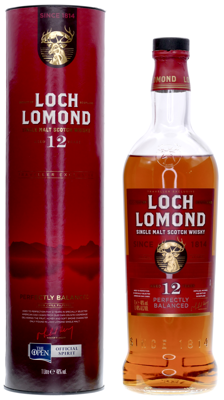|
|
3rd Party Tasting Notes
This exquisite 12 Year Old Single Malt has a deep fruity character of peach and pear layered with a vanilla sweetness and the characteristic hints of peat and smoke found in Loch Lomond Whiskies.
Loch Lomond
The Distillery: Loch Lomond
| Established: 1966 |
| Silent since: False |
| Address: Lomond Estate, Alexandria, G83 0TL Scotland, UK |
| → website |
The Loch Lomond distillery is an odd one. For one thing, as far as I know it"s the only distillery with exactly the same name as its (main) water source. And that"s not the only odd thing; because they have three types of stills (two traditional pot stills, four "Lomond" stills and one column still) on the premises, they can produce an incredibly wide variety of brands and whisky types. And unfortunately they do...
"The further category being floated does not therefore reflect traditional Scotch Whisky distillation and practice. Such a move would undermine the proposals and confuse consumers. The product in question is in any event already covered by the term "Single Grain Scotch Whisky" outlined in the draft Regulations."
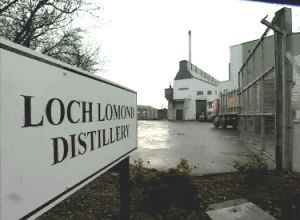
Ah, yes.... Whenever the SWA can"t come up with an answer that makes sense they fall back on that old chestnut of theirs; "customer confusion". If there"s anything that confuses customers it"s the endless stream of half-truths and outright lies that is emanating from the offices of the SWA. As you may have guessed, Loch Lomond isn"t a member of the Scotch Whisky Association. The fact of the matter is that distillation of malt whisky in Coffey stills actually IS a traditional practice. According to Ulf Buxrud, the use of continuous still in the production of malt whiskies was not uncommon during the period 1887-1945. After 1945 the Christie family - the people behind the "Speyside" distillery - apparently used Coffey stills to produce some malt whisky in the early 1960"s. So, let"s all whistle the SWA theme song now: "Twisting the truth away..."
For many years Loch Lomond was quietly churning out its fairly mediocre whiskies when the distillery suddenly found themselves in the middle of a little riot. In 2008 the SWA (the Scotch Whisky Association; primarily a lobby organisation for other large whisky producers) proposed new legislation that would outlaw the use of the phrase "single malt whisky" on bottles of Loch Lomond.
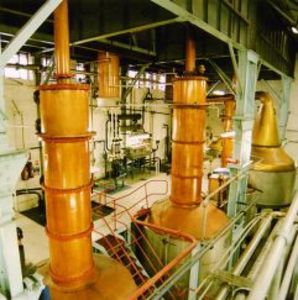
Loch Lomond proposed a separate category for some of their unique whiskies, but Campbell Evans of the SWA replied: "The SWA, whose members account for over 90% of all production and sales, rejects the notion of a sixth category. Traditionally, two types of Scotch Whisky have been produced, Malt Scotch Whisky produced by a distillation of a mash of malted barley in pot stills, and Grain Scotch Whisky produced by distillation of different cereals, including malted barley, in patent stills." Campbell then continued with:
If you"ve ever bought a bottle of Craiglodge, Croftengea, Inchfad, Inchmoan, Inchmurrin or Old Rhosdhu because you thought the whisky was crafted at a picturesque obscure distillery by that name, you were sadly mistaken - these are all brands from the Loch Lomond Distillery. I"m not a fan of most of their work, but tried a spectacular Croftengea.
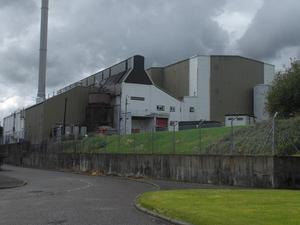
Loch Lomond is one of the more recently constructed distilleries in Scotland. It was built in 1965 and production started in 1966. Ownership of their Littlemill Distillery Company Ltd. parent company was divided between Barton Brands and Duncan Thomas, but the latter sold his shares a few years later. The distillery was closed in 1984 after the whisky industry was hit hard by a recession. Glen Catrine Bonded Warehouse Ltd. became the new owners in 1985, and in 1987 production was resumed at the Loch Lomond distillery. Until 1993 they only produced malt whisky, but in that year a Coffey still for the production of grain whisky was installed as well. After that date, whisky production at Loch Lomond increased dramatically - but keep in mind that grain whisky is much easier to produce than malt whisky.
In The New Millenium
- 2004 - The Loch Lomond distillery already produced a large number of different brands in the past (Loch Lomond, Old Rhosdu, Inchmurrin, etc.) and in 2004 the Croftengea brand is added to the Loch Lomond malt whisky portfolio.
- 2005 - The "Craiglodge" and "Inchmoan" brands are launched.
- 2006 - The "Inchfad" brand is added to Loch Lomond"s whisky portfolio.
- 2008 - In 2008 the Scotch Whisky Association (the SWA; a lobby organisation for large whisky producers) proposed new legislation that would outlaw the use of the phrase "single malt whisky" on most bottles of whisky that were produced at the Loch Lomond distillery. Loch Lomond proposed a separate category for some of their unique types of whisky, but the SWA rejected their proposals.
Trivia:
- According to Dave Broom, malt whiskies produced in Coffey stills are also known as "silent malts".
- The owners of the Loch Lomond distillery are Glen Catrine Bonded Warehouse Ltd. They also own the Glen Scotia distillery in Campbeltown - as well as a silent distillery in the Lowlands; Littlemill.
- Loch Lomond is the favourite whisky of Captain Haddock - a fictional character from the Tintin comic books. I guess that should be a slogan on many of their bottles: "best drank by fictional characters" ;-)
- The peating level of the malted barley for Croftengea is 40PPM.
- The Loch Lomond distillery has eight stainless steel washbacks with a contents of 50,000 litres...
from Malt Madness
The Owner: Glen Catrine Bonded Warehouse Ltd
| Established: 1974 |
| Silent since: False |
| Address: Laigh Road Catrine, Mauchline KA5, UK |
The group also own Loch Lomond Distillery (established circa 1814) which is a unique blend of the old and the new. Originally purchased in 1985 to ensure an adequate supply of malt whisky for the bottling plant, Glen Catrine have since invested in excess of £15.5 million in new Malt & Grain stills and new warehouses. It is currently the only distillery in Scotland that produces both grain and malt whisky on the same site. The average annual production is 10 million litres of grain alcohol and 2.5 million litres of malt alcohol, the equivalent of 43 million standard bottles of whisky every year. The average stockholding is in excess of 50 million litres of scotch whisky, making them the second largest family owned Distillery in Scotland. They also own two other distilleries, Glen Scotia and Littlemill. Glen Scotia, which resumed production in 1999, is one of only two Campbeltown Distilleries that remain in production. Being a privately owned family company, they seek to enter long-term relationships with their customers

Glen Catrine Bonded Warehouse Ltd. (established 1974), is now the largest independent bottling plant in Scotland, but was originally created to bottle whisky for their own chain of retail shops. Its current annual production is in excess of 36.5 million bottles of whisky, vodka, gin, rum and brandy. Amongst a multitude of brands, they produce the 5th highest selling whisky in the UK (High Commissioner Scotch Whisky) and the 2nd highest selling vodka in the UK (Glen"s Vodka). They also bottle Whisky, Rum, Brandy, Gin & Vodka for many of the leading "private" labels available in a variety of multiple retail outlets.
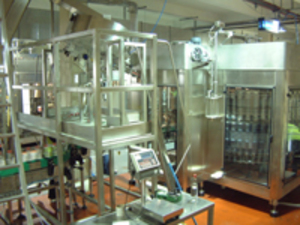
from Enterprise Tondelli
